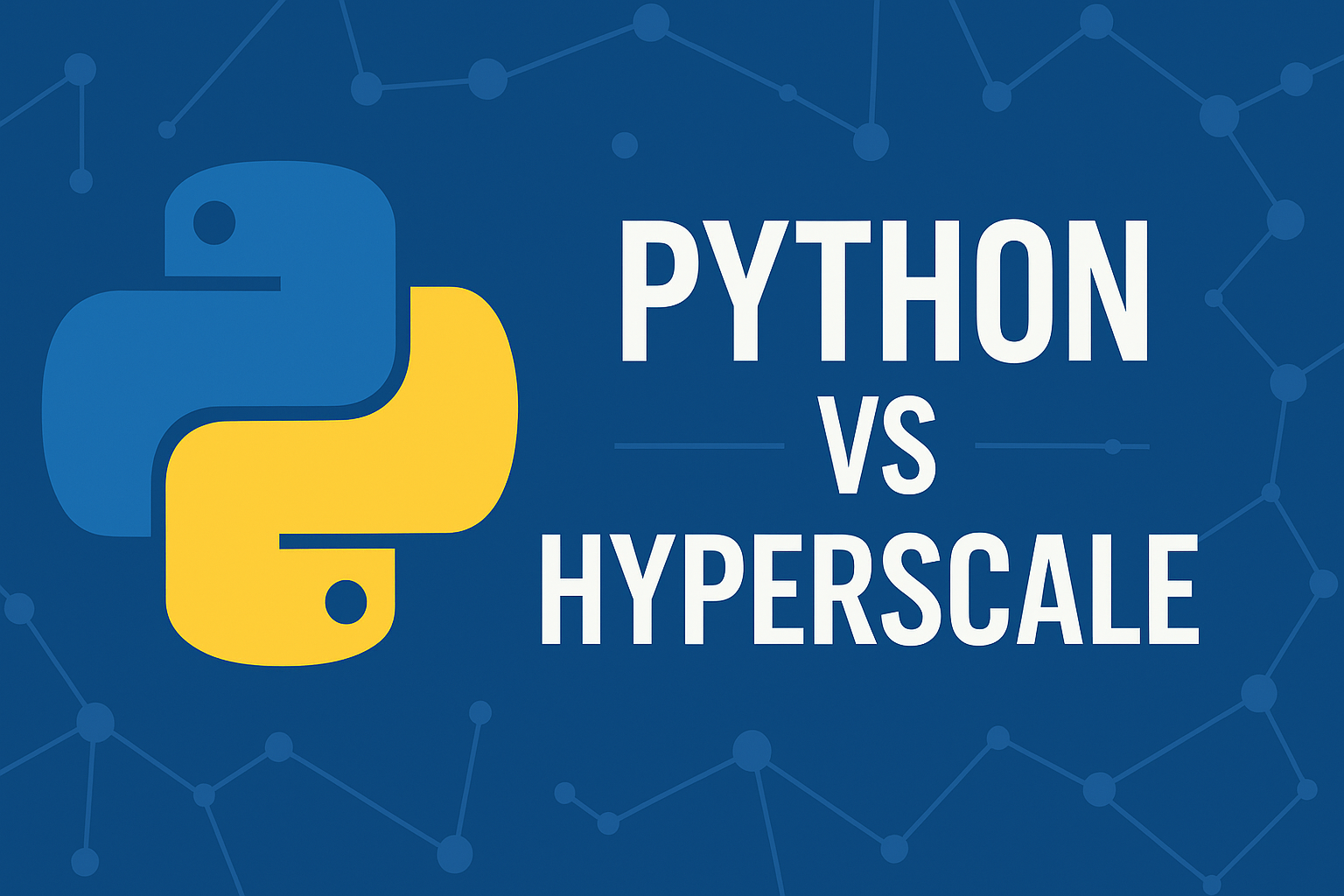The Role of Python in Modern Software Development: Suitability for Hyperscale Systems
Abstract
Python is one of the most widely used programming languages across a variety of domains including data science, machine learning, web development, automation, and scripting. Its simplicity and rich ecosystem make it ideal for rapid development and prototyping. However, despite its popularity, Python is not commonly chosen for building hyperscale, high-performance, and highly reliable distributed systems. This paper investigates the practical usage of Python across industries, contrasts it with systems programming languages adopted in hyperscale environments, and concludes with guidance on Python’s appropriate role in the software stack.

1. Introduction
Python has grown from a scripting tool to a dominant language in multiple disciplines due to its clear syntax, extensive libraries, and active community. According to the TIOBE index and Stack Overflow Developer Survey, Python consistently ranks among the top programming languages. Yet, its presence in the most demanding infrastructure—such as cloud providers, large-scale storage engines, and global-scale messaging systems—remains limited.
2. Real-World Usage of Python
2.1 Data Science and Machine Learning
- TensorFlow, PyTorch, and scikit-learn: Widely used for ML development.
- Pandas and NumPy: Standard tools for data manipulation and numerical computing.
- Jupyter Notebooks: Core to interactive data analysis and research.
2.2 Web Development
- Django and Flask: Web frameworks powering thousands of web applications.
- Example: Instagram originally used Django for its backend.
2.3 Automation and DevOps
- Ansible, SaltStack: Infrastructure automation tools built in Python.
- Fabric and custom Python scripts: Used extensively in CI/CD pipelines.
2.4 Scripting and Orchestration
- Used in cloud orchestration tools like OpenStack.
- Python scripts for data pipeline orchestration (e.g., Airflow DAGs).
3. Hyperscale Systems and Language Choices
3.1 Infrastructure at Scale
Hyperscale systems demand high performance, concurrency, and reliability. These systems are typically built in languages that offer fine-grained control over memory, execution, and concurrency.
- Kubernetes: The leading container orchestration system, implemented in Go, chosen for its concurrency model and ease of deployment.
- etcd: Core distributed key-value store for Kubernetes, written in Go for simplicity and performance.
- Apache Hadoop: Distributed storage and processing system written in Java, widely used for batch analytics.
- Google Borg: Internal container orchestration system at Google, a precursor to Kubernetes, written in C++.
- Envoy Proxy: High-performance edge and service proxy written in C++.
3.2 High-Performance Databases and Caches
- Google Spanner: A globally distributed SQL database written in C++ for high consistency and performance.
- Amazon DynamoDB: Backed by a custom implementation inspired by the Dynamo paper, using Java and other high-performance languages.
- Apache Cassandra: Scalable, decentralized database written in Java.
- ScyllaDB: A C++ implementation of Cassandra, optimized for performance.
- ClickHouse: Columnar database for OLAP workloads, written in C++.
- Redis: Written in C for low latency and memory efficiency.
3.3 Service Meshes and Networking
- Istio: Control plane in Go.
- Envoy Proxy: Data plane in C++.
- NGINX, HAProxy: Core in C.
3.4 Messaging and Event Processing
- Apache Kafka: High-throughput distributed event streaming platform implemented in Java and Scala.
- NATS and gRPC-based microservices: Predominantly Go.
These projects prioritize deterministic performance, reliability under load, and strict operational guarantees that Python is ill-suited to provide.
4. Technical Limitations of Python for Hyperscale Systems
4.1 Performance and Concurrency
- Python is interpreted; significantly slower than compiled languages.
- The Global Interpreter Lock (GIL) inhibits CPU-bound concurrency.
4.2 Memory and Latency Characteristics
- Python has higher memory overhead and unpredictable garbage collection.
- Not suitable for systems requiring tight latency SLAs.
4.3 Reliability and Observability
- Dynamic typing leads to more runtime errors.
- Limited static analysis and compile-time safety.
4.4 Ecosystem Gaps
- Fewer production-grade libraries for low-level system operations.
- Packaging and environment management can lead to dependency hell.
5. Appropriate Use of Python in Hyperscale Contexts
While Python is not ideal for the critical path of hyperscale systems, it plays a valuable supporting role:
5.1 Control Plane and Tooling
- API services, CLIs, dashboards, orchestration scripts.
- Internal developer tools and configuration validation pipelines.
5.2 ML Model Deployment
- Python used to define and train models, which are then exported for inference in C++/TensorRT/ONNX environments.
5.3 Observability and Scripting
- Custom log parsing, metrics analysis, anomaly detection in notebooks or small services.
6. Conclusion
Python’s simplicity, rich libraries, and broad applicability make it indispensable across domains like data science, automation, and prototyping. However, for building hyperscale, high-performance, and highly reliable distributed systems, Python should not be the primary language. Its limitations in concurrency, runtime performance, and type safety make it unsuitable for latency-critical or throughput-sensitive systems.
That said, Python excels as a secondary language within such environments—for control plane services, orchestration tools, and ML workflows—offering significant productivity without compromising the performance or reliability of the core system. Engineers should therefore leverage Python where it enhances flexibility and speed of iteration, while relying on systems programming languages like C++, Go, Rust, or Java for the critical data plane and control systems.